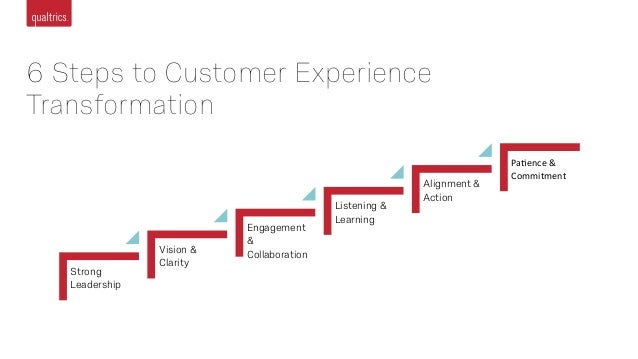What is Customer Experience Transformation?
Customer Experience Transformation encompasses every interaction a customer has with your company. Imagine walking into a store where the staff greets you warmly, understands your needs, and provides helpful suggestions. This positive experience makes you likely to return. In contrast, a rude staff member can drive you away.
Benefits of Customer Experience Transformation
The benefits of digital customer experience transformation are the following:

Increased Customer Loyalty
A positive digital Customer Experience platform builds trust and loyalty. Imagine a coffee shop where the barista knows your name and order. This personal touch keeps you coming back. Transforming these interactions ensures customers feel valued and understood.

Higher Revenue
Happy customers are more likely to spend more. Think of a clothing store that offers personalized shopping experiences. When customers feel catered to, they tend to buy more items. Customer Experience Transformation directly impacts your bottom line.
Enhanced Brand Reputation
Word-of-mouth is powerful. Consider a tech company with exceptional customer support. Satisfied customers will spread the word, enhancing your brand’s reputation. A strong Customer Experience platform makes your business a preferred choice.
Better Customer Insights

Understanding customer needs leads to better products and services. A transformed Customer Experience platform allows you to gather valuable feedback. This information helps you innovate and stay ahead of competitors.
Steps to Achieve Customer Experience Transformation
Here are the steps to achieve customer experience transformation:

Understand Your Customers
To start your Customer Experience Transformation, you need to know who your customers are and what they want. Imagine a bookstore that asks customers about their favorite genres. This insight helps them recommend books that match individual preferences. By gathering and analyzing customer data, you can create personalized digital customer experience that resonate with your audience.
Train Your Team
Your employees play a crucial role in the Customer Experience Transformation. Picture a retail store where staff undergo regular training on customer service skills. This training ensures they know how to handle various customer scenarios efficiently. Investing in your team's skills enhances the overall customer experience.
Leverage Technology
Using the right tools can streamline your customer interactions and help in Customer Experience Transformation. Think of an e-commerce website that uses chatbots to assist customers 24/7. This technological integration ensures that customers get immediate responses, enhancing their overall experience. Implementing CRM systems and AI can significantly improve customer satisfaction.
Collect and Act on Feedback

Regularly collecting customer feedback helps you identify areas for improvement. Imagine a restaurant that encourages diners to leave feedback after their meals. Acting on this feedback by adjusting menu items or service practices shows customers that their opinions matter. This continuous improvement is key to a successful Customer Experience Transformation.
Measure Success
The last step for Customer Experience Transformation is to track the results of your efforts. Set specific goals and use metrics to measure success. Think of a telecom company that tracks customer satisfaction scores and retention rates. Monitoring these metrics helps you understand what works and what doesn’t, allowing you to refine your strategies continually.
Tools for Customer Experience Transformation
In this section, you’ll find the tools for digital customer experience transformation.
Feedback Tools
Feedback Tools like surveys and reviews are crucial for understanding customer opinions. Picture a hotel that sends a survey to guests after their stay. This feedback reveals what guests loved and what needs improvement. By acting on this information, the hotel can enhance future stays, ensuring a better Customer Experience Transformation.
Data Analytics Tools

Data Analytics Tools help you make sense of customer data. Imagine an online store that analyzes purchasing patterns. This analysis reveals which products are popular and which marketing strategies work best. Using this data, the store can tailor its offerings to meet customer demands, driving a successful Customer Experience Transformation.
Customer Journey Mapping

Customer Journey Mapping visualizes the steps a customer takes from initial contact to purchase and beyond. Think of a software company mapping out the customer journey from the first website visit to after-sales support. This map highlights pain points and opportunities for improvement, allowing the company to refine each touchpoint for a smoother Customer Experience Transformation.
Personalization Techniques
Personalization Techniques for Customer Experience Transformation make customers feel valued and understood. Envision a streaming service that recommends shows based on viewing history. This personalized approach keeps users engaged and satisfied. Implementing such techniques ensures that every customer interaction feels unique and tailored to their preferences.
Challenges in Customer Experience Transformation
There are many challenges in customer experience transformation, like:
Resistance to Change
Employees may resist new processes. Imagine a sales team accustomed to traditional methods. They might find it hard to adapt to new technologies, slowing down the Customer Experience Transformation.
Data Management

Handling vast amounts of customer data can be overwhelming. A retail store collecting data from multiple sources might struggle to integrate and analyze it effectively, leading to missed insights.
Consistency Across Channels
Maintaining a consistent experience across all customer touchpoints is challenging in Customer Experience Transformation. Think of a bank that provides excellent in-branch service but poor online support. This inconsistency can frustrate customers and hinder the transformation.
Frequently Asked Questions (FAQs)
Why is customer experience transformation important?
Customer Experience Transformation is crucial for staying competitive, meeting evolving customer expectations, and driving business growth through improved customer satisfaction and retention.
What are the key elements of customer experience transformation?
Key elements of the customer experience platform include understanding customer needs, leveraging technology, improving service delivery, personalizing interactions, and continuously gathering and acting on customer feedback.
How do you start a customer experience transformation?
Start by mapping the current customer journey for Customer Experience Transformation. Then identifying pain points, setting clear objectives, involving cross-functional teams, and implementing technology solutions to enhance customer interactions.
What role does technology play in customer experience transformation?
Technology in Customer Experience Transformation enables personalized experiences, automates processes, provides valuable insights through data analytics, and enhances communication channels, all of which contribute to a better customer experience.
How can you measure the success of customer experience transformation?
Measure success of your digital customer experience platform through customer satisfaction scores, Net Promoter Score (NPS), customer retention rates, feedback surveys, and monitoring key performance indicators related to customer interactions and outcomes.
